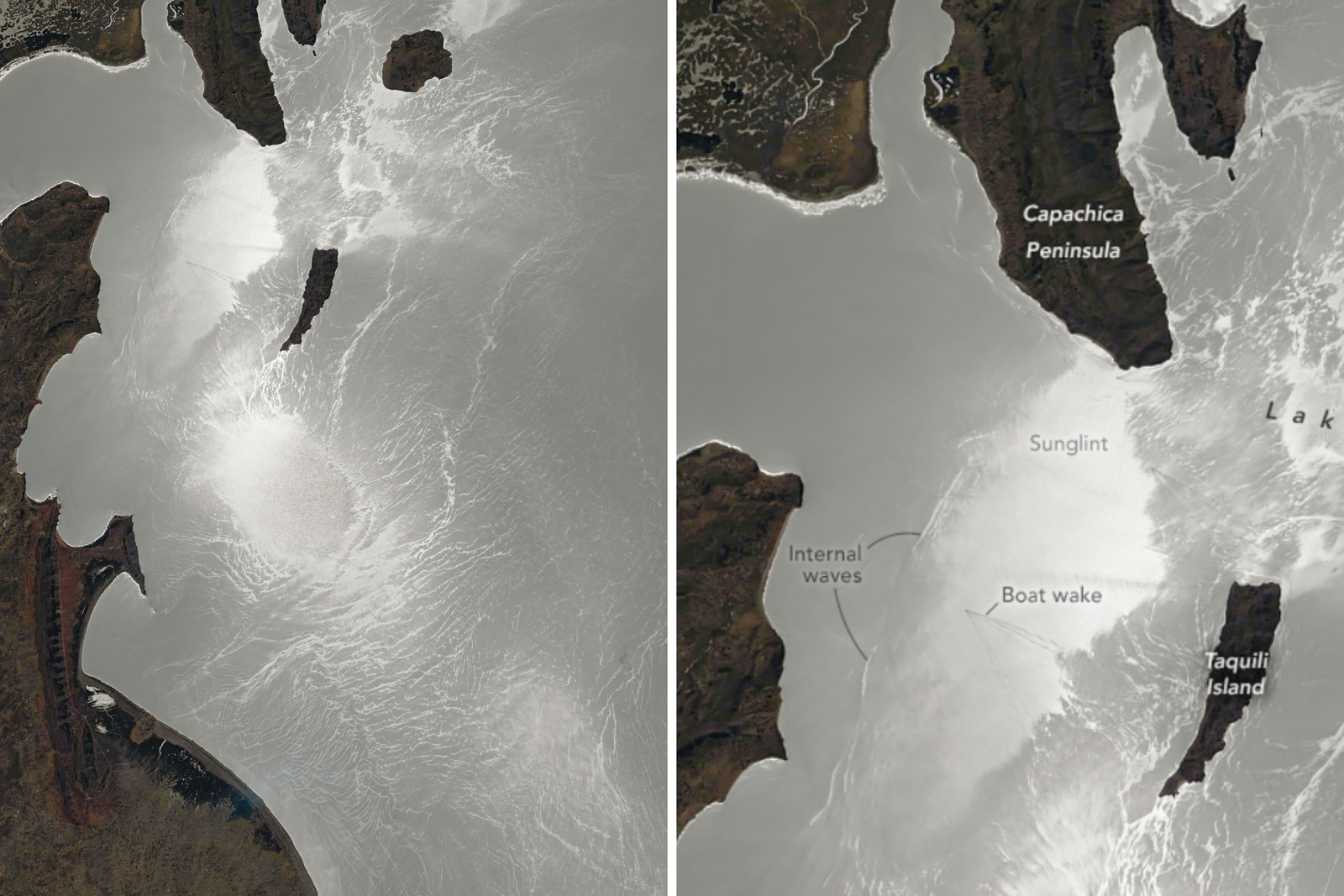New Insights in the Titue’s’s Peter’s Lake’s Lake Hunting to a Satellite Image showing an optical phenomenon as “Sundlint.”
Sunglint is found when water surfaces reflect the sun directly back toward a sensor. In this case, the sink of light has exposed new lake wind and the lake’s master – as highlighting the surface area as the left-handed rockets.
The images has been captured by an astronaut of NASA Aboard the international space station (Iss) on October 20 last year.
Internal waves
Sunglint possibilates the photograph to reveal the internal wave of the lake. These disturbance in the water develop to depth and typically have an upright amplitude on the feet or normally to slightly visible on the surface of the lake.
Via sunglint, in contrast, the indoor waves of titicacy can have seen the bright parallel lines. Based on the mappa of the maceh of the lake to the lake, it appears the waves to offer deep fuel to go on a high school course coap, in a depth around 65-165.
The observatory of the NASA earth
Direction of the wind
The image also led to new immounts to the wind direction, thank you how is the saddle with nature oil they find on the surface of the lake.
These end movies of “BioGenic” oil to decrease the surface water roughness, prompting the spectral reflections seen in the images.
In this case, the oil helped you pick up part of the farm-wind-a fense-a phenomenon nasa, at the hour of year, image was taken.
The biggest bows are found to the end of the timile island, which is on the perighed side of the titicaca lake. A younger bow was tight between amantans’s peninsula and the peniner of amantans, since the examination chamber to the chicken bowl of Southeastern Southeast.
The image has pulled attention to many v-in-shaped lines, which NASA said I wake up are left behind the cruise boats. The lowest quarter of the picture showed a second awake prominent, comes from the east.
The brightest area of the image is found in their left-handed center, where the reflection of the sunshine from the water surface returns to the camera was in its stronger.
It is against the bright water shadow, country surfaces was appeared almost black because of the escaping camera exposure amount. Earth surfaces are typically photographed in a rustic shade.
You have a tip on a science story that They neiss should be cover? Do you have a question about the sundlint? We know about science@lywsweek.com.
